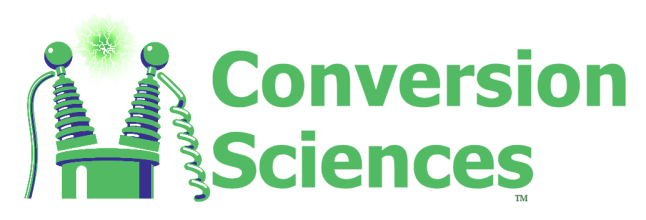Our job at Conversion Sciences is to design web tests for companies; tests that tell us exactly what we want to know about a web page or shopping cart and nothing more. We agonize over the subtle things that introduce bias into our test. We always want to test the right thing.
So as data scientists, we are naturally obsessed with the ins and outs of the test, but not to the exclusion or distraction of the real purpose of our project: increasing revenue.
The most important metric in the room
Regardless of whether you are three developers in a basement or a multimillion-dollar business, the primary measure of your success is acquisition cost Tweet. Acquisition cost is the number of conversions you get divided by your marketing advertising spend. The lower your acquisition cost, the higher your advertising leverage. From that you can draw a direct line to revenues and the investments you’ve made to generate them, and the things you need to do to increase the first while reducing the last.
The overriding goal or objective of every online marketer is to get the most qualified traffic to the site, store or cart for the least amount of money. Getting more for less gives you an advantage that can’t be obtained otherwise. Statistically speaking, no strategy, tactic or tool can help you get more from your online marketing investments better than conversion optimization.
The math of conversation optimization is almost magical. Even the small increases in conversion rate can dramatically slash acquisition cost. The money you save un-levels the playing field in your favor, and becomes a resource you can pocket or invest in generating more traffic, developing content, and driving more qualified people through your funnel to prime the pump.
All things being equal, a business that successfully optimizes for conversions will always have an advantage over the one that doesn’t. It is an axiom that is true for every business. But when you take this principal and apply it to digital goods, those advantages become magnified significantly.
The natural advantages of selling digital goods online
By their very nature, digital goods come out of the gate with a sizable advantage over practically any other online enterprise. Unlike a physical product, a digital good does not need to be touched or handled to be satisfactorily test-driven. While many virtual demos are incredibly immersive, they are still just a virtual experience. Furthermore, the incremental cost of letting customers try a digital product is tiny compared to that of physical goods. Until the online showroom or fitting room can match the authenticity of their offline analogs, all bets are off.
The offer of a free or nominally priced trial subscription or download is a low bar to entry and provides digital goods businesses with a powerful engine for accelerating acquisitions. However, the same characteristics that smooth the way for acquisitions —minimal commitment, friction and cost—can also emerge as obstacles when it comes time for activation and turning a trial into a paid subscription or license.
The arc of conversion optimization
Narrowing the focus of a project to a single, specific objective brings us to the first step and rule of conversion optimization. For digital goods, that means restricting the definition of customer acquisition to the act of converting a lead or prospect into trying the product and then ultimately purchasing. By clearly defining the objective, we can then begin the scientific process of measuring, testing and optimizing for it.
In the sciences, there are the hard disciplines ruled by the quantitative laws of mathematics and physics and the soft disciplines guided by the qualitative and experiential methods of psychology and sociology. When it is at its best, conversion optimization is the perfect synthesis of the two.
For many that do conversion optimization, either on their own website or as a consultative business, the split test is the most definitive tool Tweet. It delivers data that allows businesses to predict the behavior of their visitors. The real challenges are choosing the right things to test, and ensuring that your tests are valid. Without the analytics and other explorations that give it meaning, tests results may lie to you.
The first step is to develop hypotheses – educated guesses – for what may be keeping visitors from advancing through the funnel, signing up for a trial, or from placing an order.
These are found in the analytics and click-tracking maps, in recorded sessions and user trials, and in surveys and customer support interviews. These are ranked based on bottom-line metrics—per channel acquisition costs, revenue and average order value—that go beyond the isolated conversion rate stat to give you a true benchmark for your conversion campaigns.
With the analytics in hand, you’ll see where you have a problem, but you still won’t know the exact root cause or how to test and solve it. The list can be quite long.
Effective tests lead to impactful results
When you get to the point where the list can no longer be reduced by deductive means, you rank your hypotheses by estimated ROI. Those ideas that are supported by the data, that address important traffic and can be tested most easily move to the top of the list.
It’s then time to split test, or A/B test. The split test is the final judge or deciding vote on the analytics Supreme Court that will tell you whether or not your hypotheses are correct. Split testing is really just another form of analytics, but unlike the others, it allows you to control the data for the most accurate results.
As the final piece in the puzzle, testing gives you the data needed to find the potential winner, roll it out on your site, and do the post-test analysis that either confirms or refutes your hypothesis, and testing process.
While conversion rate optimization is a science, you don’t need to be a scientist to be successful with it. Once you get beyond the intimidation factor of the metrics, math and tools, it is still marketing after all. Trust your experience and intuition as online marketers. Your instincts, and a healthy curiosity, are just as invaluable as the tools we’ve covered and will serve as your guide as you perform your explorations and form and test your hypotheses.
The following Split Testing Best Practices will help you get started on your way.
Split Testing Best Practices
- Nail the value proposition
Test to find the images, headlines and copy that clearly articulate the value proposition and follow through on the expectations set by the campaign that brought the user to the page Tweet.
- Use qualitative analysis to understand your audience
Set the spreadsheets and reports aside for a moment and focus on the analytical tools—heat tracking, session cams, customer surveys/interviews—that can give you a deeper insight into the motivations and actions of your targets.
- Channel your inner Columbo or Veronica Mars
In many instances, effective conversion optimization requires some detective work. Use the wealth of institutional knowledge and data—usage, CRM and opportunity info– at your disposal to hone in on your hypotheses.
- Isolate variables
Change only one element within a test variation Tweet. Changing multiple variables may bring you wins, but it won’t tell why, or what will and what will not work in the future.
- Understand sample size
Tools lie. Even if it’s telling you that your test is above the magical 95% confidence level, it may not be. Knowing the pitfalls of sample sizes and how to calculate statistical significance yourself will save you the heartache of calling a test too early.
- Don’t run multiple tests on the same traffic
The fastest way to invalidate a test is to have the user enter into two concurrent tests. If you want to run tests in parallel, split the traffic by channel or audience to reduce the risk of invalidation.
- Don’t forget to do the post-test analysis
When you move the winner into production, your results invariably won’t match those reported by your testing tool. A post-test analysis will give you a clearer picture of the real lift and how the new variation is performing.
To learn more about the digital commerce lifecycle, conversion rate optimization, revenue leakage and get examples of in-depth strategies from digital leaders, check out Avangate’s Customer Acquisition eBook.
About Conversion Sciences
Conversion Sciences is an optimization company specializing in increasing conversion rate, average transaction value and digital marketing ROI. Our Conversion Catalyst™ process combines the time-tested principles of the Scientific Method with advanced digital marketing techniques to reliably and repeatably help our clients “find the hidden money” in their sites.








